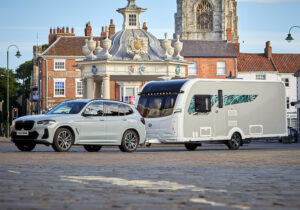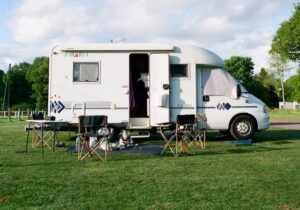Faulty parts, damp walls and cowboy sellers – if you’ve bought a used caravan before, there’s a good chance you’ve experienced one of the many issues that can arise throughout the process.
Just like most things in life, purchasing a used caravan is almost always cheaper than buying brand new. This can seem very appealing for first-time buyers, but second-hand shouldn’t mean second-rate.
Every caravan is different and without knowing what you should be looking out for, it’s easy to end up feeling like you got the short end of the stick. Fortunately, the kind folks at Ripe Insurance have offered their best tips and advice when buying a caravan on the second-hand market.
Check for signs of damp
For many caravan buyers, damp is an unfortunate reality. It occurs when there’s excess moisture within a poorly-ventilated space and, if left unnoticed and untreated for too long, it can lead to extensive damage.
Make sure to inspect a caravan for damp and be wary that some sellers will try to hide the signs behind furniture. Check the seals and sealant around the windows and doors for any noticeable damage such as cracks or peeling.
Then, run your hands over the walls to ensure there aren’t any unusual bumps, or ‘pimpling’. If they feel wet or spongy, it’s a rather indicative sign of damp. Other things to look out for include musty smells from any fabrics and discolouration on the walls.
Look for rust
Rust can occur anywhere on a caravan’s exterior, but it’s not always as obvious as you’d think. One area in particular that often goes unnoticed is the chassis. Sitting underneath the vehicle, this sturdy metal frame will generally be painted, part-galvanised or fully galvanised.
Whatever the type of chassis, it requires regular checking and maintenance. So, when looking to buy a used caravan, you may want to ask the seller about it and what, if any, repairs have been carried out on it.
Inspect the tyres
Like any vehicle that has them, a caravan’s tyres need to be regularly checked to make sure they’re safe to use. When buying a used vehicle, you need to inspect a couple of key aspects.
Firstly, the tyres need to be properly inflated and in line with the manufacturer’s recommended levels, which you can usually find in the handbook. Make sure to check them in cool conditions!
Cracking is another common sign of tyre ageing and is usually quite noticeable on the outer rubber. This can occur for various reasons, including overuse, so you’ll need to have an honest conversation with the seller if you spot any.
You’ll have to look for any general wear and damage, too. Some of the easiest things to spot include brake flatting and exposed cords. The former is caused by excessive braking and is evidenced by visible scratches and cuts to the tyre rubber, whilst the latter is indicative of more severe damage and, if spotted, means the tyre is both unsafe and illegal.
Ask for the service history
When you buy any used vehicle, one of the best ways to make sure you’re dealing with a reputable seller is to ask for the service history. Caravans should be serviced each year to make sure they’re running safely and efficiently. It’s not a legal requirement, but a seller that can demonstrate a history of doing so is likely to be genuine.
A full service normally inspects the chassis, main bodywork, electric, gas, fire safety and water systems, ventilation and damp issues. Getting your caravan serviced regularly is the best way to catch smaller issues before they have a chance to become bigger, much more expensive problems.
Photo credit: Egor Komarov / Pexels




